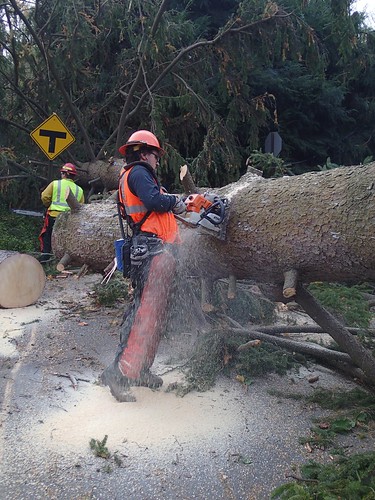
When Hurricane Sandy arrived in New Jersey and New York, so did the Forest Service and other interagency wildland firefighting specialists filling orders from FEMA and assisting in the massive clean-up effort that is critically needed on the East Coast.
“Our Incident Management Teams bring skills in organization, planning and logistics to meet the needs of communities tragically affected by Hurricane Sandy,” said Tidwell. “Crews are clearing downed trees, providing support to local emergency response agencies and assisting at FEMA facilities.”
The Forest Service’s experience in wildland fire management makes it an ideal partner to help coordinate operations during a natural disaster. The Incident Command System, which governs the actions of everyone involved in disaster recovery, was developed by the Forest Service after years of experience in wildland fire suppression operations.
Currently, over 1200 personnel, 900 of which are Forest Service employees, are providing relief efforts in New York, New Jersey, Connecticut, and West Virginia.
Nine Incident Management Teams are operating mobilization centers, staging areas, and supporting Emergency Operations Centers. Under emergency support functions that are detailed in the National Response Framework, the Forest Service assumes responsibility for providing firefighting assets and personnel who coordinate disaster relief operations, oversee distribution of supplies, and provide strategic organizational experts at regional and national coordination centers.
Although Forest Service firefighters are known for their wildland fire suppression skills, they also have experience applicable to all types of hazards and emergency scenarios, particularly in the aftermath of hurricanes and severe storms. Forty three 20-person fire crews from 17 states are now on the ground in the hurricane ravished areas, clearing roads, taking down fallen trees and coordinating local emergency responders.
Normally considered a noise nuisance, the sound of chainsaws is welcomed in the neighborhoods of impacted communities as trees of all sizes are cut, bucked, and moved out the way. Clearing roads are an essential element in relief efforts, allowing power companies access to their lines and expediting the delivery of critically needed materials and supplies.
Ask the crews why are they are there, and you will get the same message each time, ‘Because people need help.’



